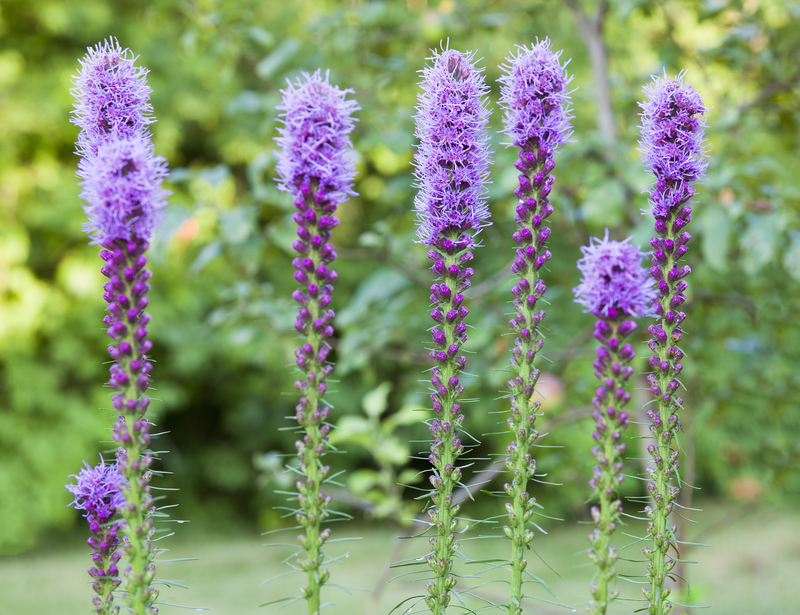Get Inspired by These Hedge Trimming Techniques
Posted on 04/10/2025
Get Inspired by These Hedge Trimming Techniques
Well-maintained hedges are more than mere garden boundaries--they shape, accentuate, and beautify outdoor spaces. If you're looking to refresh your landscape, hedge trimming techniques can offer endless inspiration. Whether you're a homeowner with a basic hedge or a gardening enthusiast longing to experiment with shapes and designs, learning the right methods can dramatically enhance your yard's appeal.
In this comprehensive guide, you'll discover hedge trimming tips and tricks, understand when and how to trim different types of hedges, and get ideas for creative topiary. Ready to transform your hedges from ordinary to extraordinary? Get inspired by these hedge pruning methods and revitalize your outdoor living space.
Why Proper Hedge Trimming Matters
Before diving into specific hedge cutting techniques, it's vital to understand the importance behind proper trimming:
- Encourages healthy growth: Strategic cutting removes dead or diseased branches, promoting fresh, dense foliage.
- Defines boundaries: Well-trimmed hedges create tidy property lines and offer privacy.
- Boosts curb appeal: Professionally maintained hedges instantly elevate your landscape's visual value.
- Prevents overgrowth: Routine maintenance controls unruly hedges and eliminates potential hazards.
- Invites creativity: With creative hedge shaping techniques, your shrubs can serve as unique garden features.

Essential Hedge Trimming Tools
To get the best results from any hedge trimming methods, quality equipment is essential. Here's what you'll need:
- Manual hedge shears: Perfect for precise cuts and smaller hedges.
- Electric or cordless hedge trimmers: Efficient for larger areas and uniform trimming.
- Pruning saw: Ideal for thicker branches that shears can't handle.
- Loppers: Useful for medium-sized stems and hard-to-reach spots.
- Protective gear: Always use gloves, safety glasses, and sturdy shoes.
Maintaining sharp blades and keeping your tools clean prevents plant diseases and makes your job easier.
Understanding Hedge Types and Growth Patterns
Knowing the type of hedge you have will help you choose the best hedge pruning technique and timing for optimal results.
Evergreen Hedges
Examples: Boxwood, yew, holly, privet.
- Retain leaves all year round.
- Best trimmed in late spring or early summer.
- Easy to shape due to their dense foliage and slow growth.
Deciduous Hedges
Examples: Beech, hornbeam, hawthorn.
- Shed leaves in winter and require winter or early spring pruning.
- Respond well to harder pruning and rejuvenation.
Flowering Hedges
Examples: Forsythia, lilac, rose, spirea.
- Timing is crucial; prune after flowering to avoid removing next season's buds.
- Usually benefit from a lighter touch to preserve blooms.
Main Hedge Trimming Techniques to Try
Let's explore some professional hedge shaping techniques and creative ideas to inspire your next trimming session:
1. Formal Hedge Trimming
Formal hedges are characterized by straight lines, precise shapes, and tidy, uniform appearances. Formal hedge maintenance techniques involve:
- Using strings, stakes, or plumb lines to guide straight cuts.
- Frequent, light trimming throughout the growing season.
- Keeping the base wider than the top ("tapering") to ensure sunlight reaches all foliage and reduces bare spots.
- Sharp, clean cuts to allow quick healing.
2. Informal Hedge Pruning
Prefer a more relaxed vibe? Informal hedges follow the plant's natural growth pattern, offering soft, flowing lines. Here's how:
- Trim less frequently and remove only wayward branches.
- Follow the natural contour of the shrub, preserving organic shapes.
- Encourage air and light penetration by thinning crowded branches.
This approach is perfect for hedging plants with showy flowers or interesting foliage.
3. Topiary and Creative Shaping
Take your garden artistry to a new level with topiary techniques. Sculpt your hedge into geometric shapes, animals, or abstract designs for a whimsical effect:
- Start with dense, slow-growing shrubs like boxwood for intricate designs.
- Use wire frames as guides for advanced sculptures.
- Begin with simple spheres, cones, or spirals before attempting complex forms.
- Trim frequently for crisp edges and defined shapes.
4. Rejuvenation and Restoration Pruning
Overgrown or neglected hedges don't have to be removed--sometimes, a hard prune can breathe new life:
- Cut back old stems close to the base in late winter or early spring.
- Remove up to one-third of the oldest growth each year for gradual rejuvenation.
- Water and fertilize after pruning to support recovery.
Don't be afraid to go drastic if necessary! Many hedging species rebound beautifully when cut hard.
5. Mixed Height and Layered Hedges
For a dynamic landscape, experiment with:
- Trimming sections of your hedge at different heights to create waves or tiers.
- Combining species for varied textures and seasonal interest.
- Incorporating flowering or berry-producing shrubs for biodiversity and pollinator attraction.
Tips for Achieving the Perfect Trim
Ready to put these hedge cutting techniques into action? These expert tips ensure success:
- Always trim on a dry day. Wet foliage can clog tools and promote disease.
- Start trimming from the bottom up for better visibility and results.
- Step back frequently. Assess your work from a distance to maintain symmetry.
- Use the right technique for your hedge type--don't try geometric shapes on naturally loose, sprawling shrubs.
- Disinfect tools between plants to prevent disease spread.
Remember: patience and consistency are key. The more you practice, the better your results will become!
When and How Often to Trim Your Hedges
Timing matters! The frequency of trimming depends on the species and your intended style:
- Formal hedges--trim lightly every 4-6 weeks from late spring through early autumn.
- Informal or flowering hedges--prune right after flowering or once a year to maintain shape.
- Evergreen hedges--work in late spring or summer to avoid frost-damaged new growth.
- Deciduous hedges--best pruned while dormant in late winter.
- Hard pruning for rejuvenation--carry out once every few years in late winter or very early spring.
Always research your shrub's needs--incorrect timing may result in lack of blooms or plant stress.
Common Hedge Trimming Mistakes to Avoid
Even seasoned gardeners can make mistakes. Avoid these pitfalls to ensure healthy, lush hedges:
- Cutting the top too early: Trimming before hedges establish full height can encourage bushy growth at the bottom and slow height development.
- Neglecting the base: Not tapering the hedge can lead to gaps and leaf loss in lower branches.
- Over-trimming: Excessive pruning weakens the plant and can leave exposed, brown patches.
- Using dull tools: Ragged cuts increase the risk of disease and slow healing.
- Ignoring safety: Always wear protection and be mindful of power tool cords and heights when using ladders.
Inspirational Hedge Designs From Around the World
Need some design ideas? These famous hedge designs highlight what's possible with the right hedge trimming techniques:
Classic English Knot Gardens
- Interwoven boxwood hedges form symmetrical, intricate patterns.
- Highlight formal shapes and geometric precision.
French Parterre Gardens
- Low, clipped hedges create ornate, flourishing designs often filled with colorful annuals.
Topiary Art in Italy
- Historic estates display spirals, cones, and animal figures, showcasing the art of advanced trimming and continuous care.
Modern, Minimalist Hedges
- Rectangular box-shaped hedges frame modern homes with crisp simplicity.
- Alternating heights and single-species lines for visual impact.
The Benefits of Professional Hedge Trimming Services
If you want flawless hedges without the hassle, consider hiring a hedge trimming company. Professionals offer:
- Expert knowledge of species and best-practice trimming routines.
- Specialized equipment for large, tall, or complex projects.
- Efficient, safe, and insured services for peace of mind.
- Advice on plant health, disease control, and fertilization.
Professional services are particularly helpful for mature, highly formal, or creative topiary projects.

Frequently Asked Questions about Hedge Trimming
Can I trim hedges in winter?
Some deciduous varieties benefit from winter pruning, but avoid trimming evergreens at this time to protect them from frost damage.
How much should I trim at once?
For healthy plants, avoid removing more than one-third of the greenery per season. For rejuvenation, more drastic measures are possible if followed by supportive care.
What should I do with hedge clippings?
Compost the clippings if disease-free, or use them as mulch. Dispose of diseased branches properly to prevent fungal spread.
What's the ideal shape for a hedge?
The best shape is slightly wider at the base than at the top--this allows sunlight to reach all leaves, preventing bare patches.
Conclusion: Transform Your Landscape with Inspired Hedge Trimming
Mastering hedge trimming techniques can elevate the look and health of your outdoor spaces. From classical forms to playful topiaries, there's a style and method for every gardener.
Whether you're seeking privacy, defining your property, or adding an artistic touch, hedge pruning methods offer endless opportunities. With the right tools, a little creativity, and steady maintenance, you'll enjoy trimmed hedges that inspire for years to come. Now is the perfect time to grab your shears and experience the satisfaction of transforming your garden's green architecture!
Get inspired by these hedge trimming techniques, and start shaping the landscape of your dreams today.

